A Literary Cities piece by Claire Rosslyn Wilson.
‘A treasure house of courtesy, shelter for strangers, abode for the poor, hometown of the brave,
avenger of the offended, welcome dwelling of firm friendship, and uniquely beautiful in its location…I left there with no sorrow,
just because I saw that city.’ (Don Quixote’s comments on Barcelona, the only city mentioned by name in the novel.) 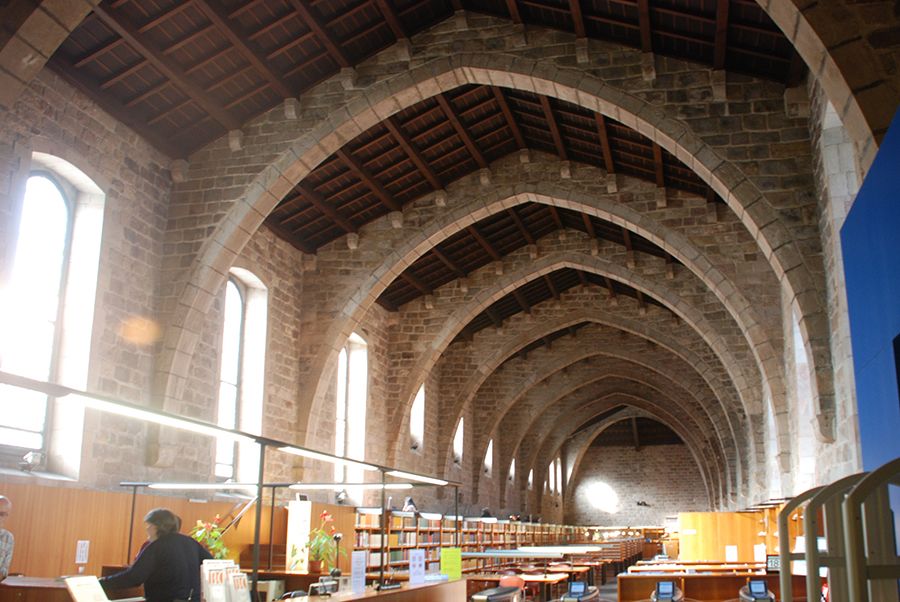
You could’ve been tricked into thinking it was spring. On a December day in Europe it is not the norm to walk beside the beach in full sun with short sleeve t-shirts, even in Spain. People smoked pot stretched out on the sand, palm trees met blue skies and restaurants filled with a mix of paella eating tourists and long family lunches. The surrounding streets had that feeling of a sea-side town, adverts of surf lessons reminded me of Bondi while I wondered what waves they planned to catch on the flat Mediterranean.
I had unfinished business with this city. I went to Barcelona to write. I went to see the city I’d ignored. I went to be impressed
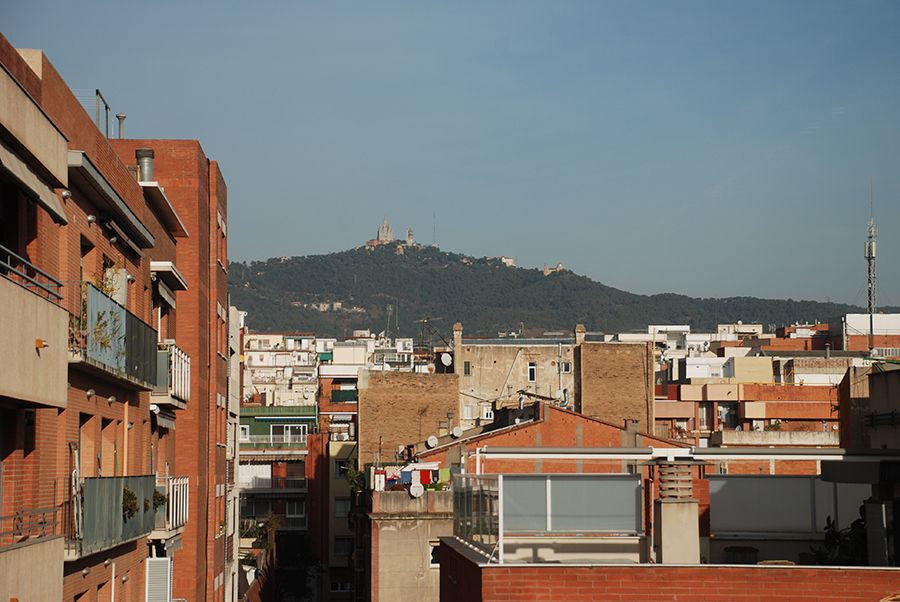
My first impressions of it were through friends in Valencia (a city to the south) who told me that Barcelona was not worth visiting, that there was nothing to see, that if I wanted to go they weren’t going to take me. Even knowing their attitudes were prejudiced by a rivalry between the two cities that exceeded that of Melbourne and Sydney, I didn’t make the time to visit, even though it was not so far north from where I had lived for a year, even though I’d visited almost every other region in Spain.
I wrote about my memories of Spain, adding new ones to the old until they mixed into a mess. Now, I noticed new things and I’m not sure if it was because it was a different city or if it was because it’d been ten years since I was last in Spain. But there were parts that came back to me as I settled into the language again: the soft street light at night that made shadows, the patterned pavement tiles, apartments with internal courtyards that mixed cooking smells.
I mashed these recollections together while staring over rooftops towards the hills that back onto the city. I have a close familiarity, if not to say obsession, with libraries. Over the years I’ve collected at least seven library cards for various councils just so that I can access books at every place I’ve lived or stayed. Even when living in the same city, I didn’t like the idea of staying in the one place for too long. But on each move I’d locate the local library, different buildings with familiar catalogues: Latin American poets sitting a few shelves down from manuals on extreme fishing and just around the corner the travel section. Losing myself in ideas from far-off places was a steadying way to end a frantic day at work and gave me a curiosity to find these places I’d read about. It turns out that Barcelonans also enjoy their books as more than half have library cards and libraries were voted as the most popular municipal amenity.
Over the years I’ve collected at least seven library cards for various councils just so that I can access books at every place I’ve lived or stayed.

The library I chose in Barcelona was just an everyday library in a not too-touristic suburb. The surrounding streets were more functional than impressive, aside from a square tucked away behind shopping avenues. The balconies were for everyday washing, practical red brick and cement. The people at the tables around me fell into the two usual groups: students hand writing notes and retirees with the latest paper. There was also the occasional person aged somewhere between the two, tapping away on their laptops, like me. Ensconcing yourself in local libraries has a way of making you feel more local, makes you think that perhaps it would be possible to be comfortable in a place.
On the days I allowed myself to be a tourist I took my library fascination further afield, with a visit to the National Library of Catalonia in the old part of town. The building was once a hospital built in the 15th century and the library was moved there in 1940.
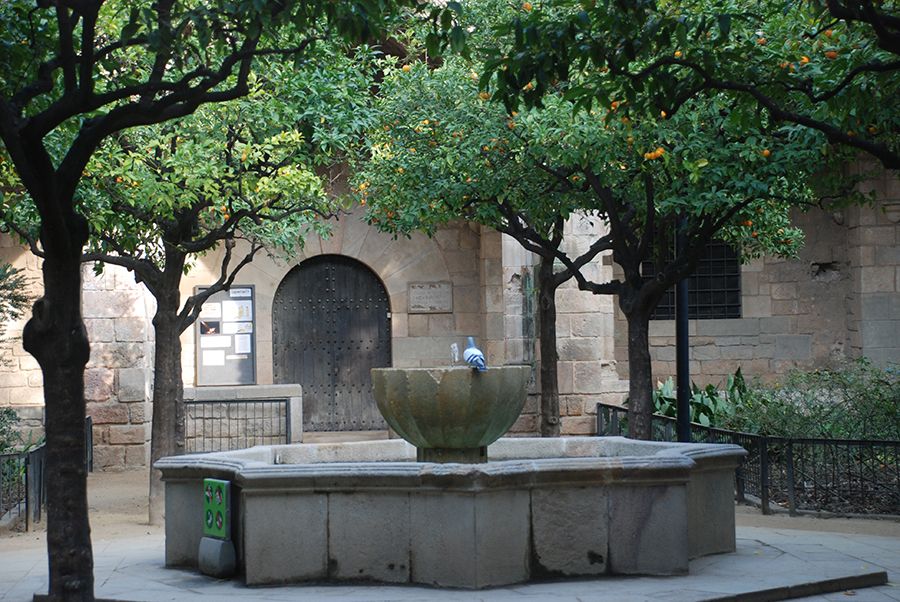
The courtyard had the orange trees that I associated with Spain, more decorative than nutritious, the fruit standing out as the trees around them dropped their leaves. It was a courtyard that still managed to be peaceful in spite of the university students and the homeless in sleeping bags. “What collection do you want to consult?” asked the librarian when I inquired about library cards. I felt like an imposter, not sure what authors I should be looking for, which ones were the famous ones.

In the books of these libraries you see that this is a city of two languages: Catalan and Spanish. Catalan is a Romance language that evolved directly from Latin and is spoken by about 9 million people. It was banned under Franco’s dictatorship (1939-1975) and it wasn’t until the transition to democracy (1975-1982) that it became one of the official languages of the state of Catalonia, used in education and mass media. Now most people native to Barcelona are effectively bilingual. In the libraries Catalan and Spanish vie for shelf space and the lady at the reception greeted me with the Catalonian “bon dia”. Concentrating on overheard conversations in the metro I could pick up words, I guessed meaning from my knowledge of Spanish, a process of mistranslation that left me with only partial stories, a tease to get me curious.
Walking the city made me less surprised that Barcelona was designated a City of Literature in December. Their application lists their literary qualifications: their two languages, their legacy as a safe haven for persecuted writers, their festivals, prominence in literature, education programs, network of libraries, the prominence of book fairs, a Publishing Gala with literary prizes and a strong publishing sector that exports books all over the world. (According the their submissions the publishing sector accounts for half of their cultural industry.)
I saw a hint of this on the street level in the well-attended bookshops. My favourite one was Altair, a bookshop focused on travel, a chance to find new places in a new place. It stocked maps next to novels, both seen as equally legitimate ways to gain awareness about a place. I liked the idea of doing my travel research through literature rather than the facts and figures, even if it was less reliable.
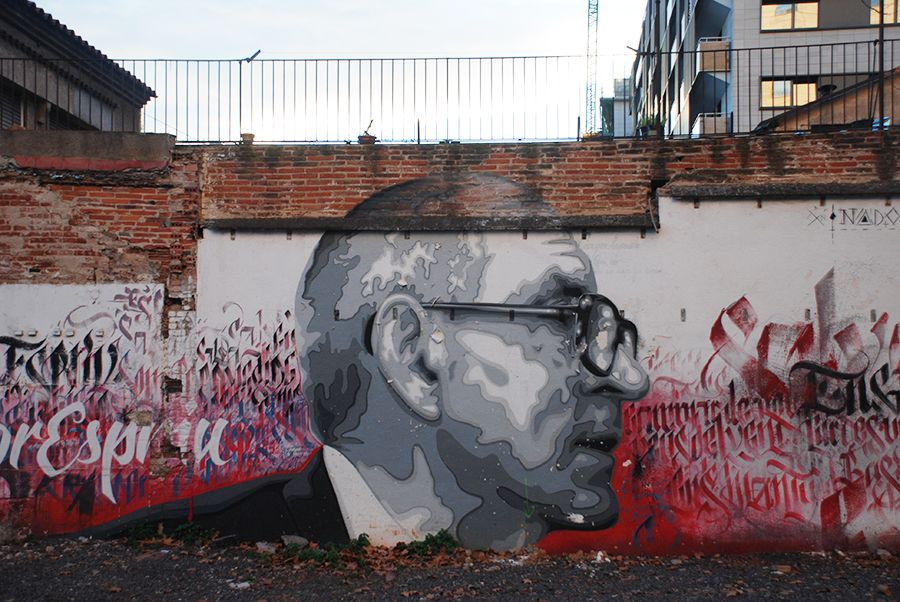
But perhaps one of the more charming examples of Barcelona’s literary clout is the day of books and roses in April. The 23rd of April is St George’s Day, the patron saint of Catalonia, and is also the day on which both Shakespeare and Cervantes died in 1616. People celebrate the day by giving their loved ones a favourite book and a rose. Barcelonans come out in large numbers to browse and buy books; it’s like Valentine’s Day, but so much better.
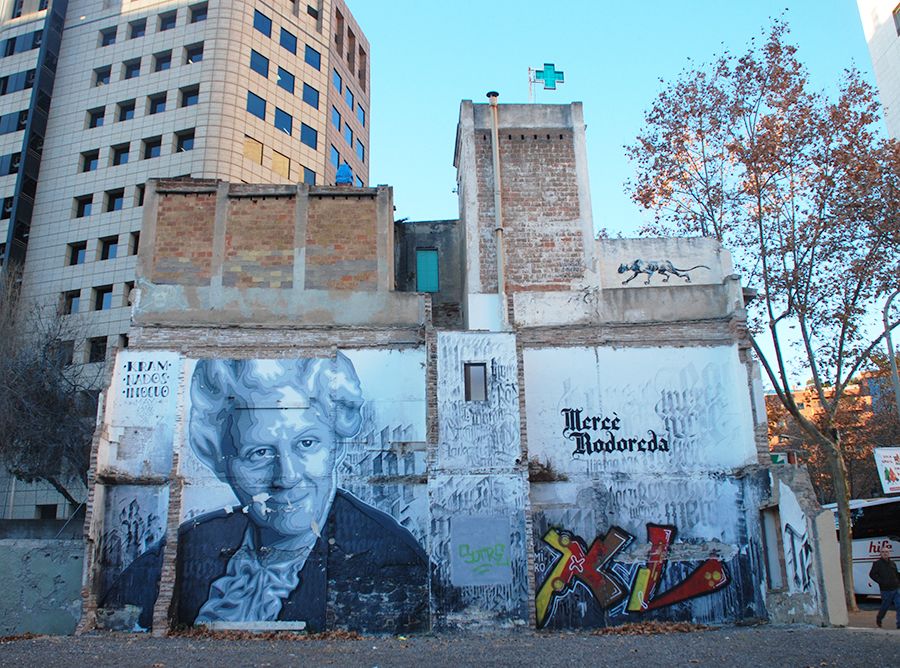
But aside from these literary headlines, how do you get to know a literary city? How do you get to meet more than just the surfaces of her? In Barcelona there were the obvious attractions: the tree-lined promenades a breathing space between two lines of traffic; the narrow streets and old buildings that always appeal to me in spite of my resistance; the bakery/coffee shops that are springing up on every corner; the palm trees; the markets; the art. But like any city, it takes time to unravel the details and to get to a point where you can pretend that you know her riddles.
I’m not sure if I found what makes Barcelona a literary city, but I’m glad I finally gave it the time it deserves. I felt I owed it to drink from the Fountain of Canaletes where tradition insists that I am destined to return. I’m happy with that.
This is a Literary Cities piece, part of a series where writers reflect on the places and experiences that have inspired them. To read more like this, click here. All images courtesy of Claire Rosslyn Wilson.
To have the latest from Writers Bloc delivered straight to you, click here to sign up to our newsletter. We will literally deliver our website's best content, giveaways and opportunities to your figurative door.
Claire Rosslyn Wilson
Claire Rosslyn Wilson is a poet and nonfiction writer. She is a regular writer for Art Radar and Culture360 and has co-written a book on Freelancing in the Creative Industries (Oxford University Press). She’s had her poems published in various Australian journals and she writes short poems about the everyday objects around us at http://clairerosslynwilson.com/ You can also follow her thoughts @clairerosslyn

